The term “glass ceiling” is not just a metaphor but a reality for many women striving for leadership roles in business. Yet, understanding this and employing targeted strategies can significantly enhance women’s career trajectories.
My goal with this article is to dive deeper into these actionable strategies, shedding light on how female professionals can surmount these barriers and advance in corporate leadership.
Understanding the Glass Ceiling
The glass ceiling refers to an invisible barrier that prevents women from ascending to the highest ranks in the corporate world, despite their qualifications or achievements. Historically, this term emerged during discussions about gender inequality in the workplace. Recent statistics show a considerable gap despite progress: women hold less than 30% of senior executive roles globally.
Common barriers include systemic biases in recruitment and promotion, fewer networking opportunities compared to male counterparts, and limited access to influential sponsors who can advocate on their behalf.
Challenges Specific to Women in Leadership
Women in leadership roles often encounter a unique set of challenges categorized as psychological, structural, and cultural barriers. Here’s a deeper dive into these obstacles and look at several actionable strategies to navigate and mitigate their impacts.
Psychological Barriers
On the journey to leadership, women often encounter psychological hurdles that can hinder their progress and impact their self-perception. Imposter syndrome and a lack of self-confidence stand out as significant barriers that many of us face as we climb the corporate ladder.
Understanding and Acknowledging Imposter Syndrome
This syndrome is characterized by feelings of inadequacy and a persistent fear of being exposed as a “fraud,” despite evident success and competence. By understanding that these feelings are common and often unfounded, we can begin to separate irrational thoughts from reality.
Initiatives like workshops or company-wide discussions about imposter syndrome can help demystify and destigmatize these experiences, making them more manageable.
Skill Building
Building concrete skills is a direct method to boost self-confidence. Continuous professional development in areas such as leadership, decision-making, strategic thinking, public speaking, and industry-specific technologies can equip women with the confidence they need to truly shine.
For instance, leadership training programs specifically designed for women can address our unique challenges and build on intrinsic strengths. Moreover, even within small or familiar settings, public speaking engagements can significantly bolster self-assurance as they provide opportunities to be acknowledged and validated by peers.
A proactive approach could also include pursuing higher education or certifications that embellish a resume and enhance personal credibility and self-esteem. Regular attendance at industry conferences as participants or speakers can further solidify one’s standing and knowledge in the field.
Support Systems
A robust support system is also crucial for overcoming psychological barriers. This network could include:
- Peer Groups: Connecting with peers who understand and share similar professional experiences can provide emotional and moral support. Such groups offer a safe space to express concerns and share strategies to overcome personal doubts.
- Mentors: A mentor who has navigated similar paths can offer invaluable guidance and serve as a living testament to overcoming these barriers. Mentors can provide career advice, networking opportunities, and, most importantly, act as a sounding board.
- Professional Coaches: Investing in a professional coach can personalize strategies to combat imposter syndrome. Coaches can help set realistic goals, celebrate achievements, and reframe challenges as opportunities for growth.
- Feedback Mechanisms: Constructive feedback, both formal and informal, is essential to counteract imposter syndrome. Regular performance reviews, along with continuous feedback sessions, provide objective assessments of one’s work and help debunk unfounded fears of inadequacy.
By actively engaging in these practices, women in corporate leadership can begin to overcome the internalized barriers of imposter syndrome and self-doubt, paving the way for a more confident and assertive presence in their professional domains.
Structural Barriers
Structural barriers not only encompass the well-known issue of male-dominated networks but also include a range of non-inclusive company policies that can subtly but significantly impede women’s career advancement.
Male-dominated networks pose a challenge as they can create echo chambers where similar profiles and ideas circulate, often excluding diverse viewpoints and sidelining women from crucial networking opportunities that could lead to career advancement.
Here are a few actionable solutions to tackle these barriers.
- Strategic Networking: Women can tackle this by intentionally seeking inclusive networking groups or industry associations that value diversity. Engaging in these groups provides access to a broader range of perspectives and potential advocates.
- Internal Initiatives: Organizing and participating in company-sponsored mixers, mentorship programs, and networking events can help break down these organizational barriers. Mentoring circles, in particular, can be structured to ensure female talent is connected with leadership.
- Advocacy: Encouraging the formation of women’s networks within the company and promoting participation in decision-making processes helps integrate women into critical business circles.
Non-Inclusive Company Policies:
Policies that might seem neutral on the surface can disproportionately affect women and create significant barriers to their progression. These include inflexible work schedules, inadequate maternity leave, lack of support for re-entry into the workforce, and criteria for promotion that may overlook the unique contributions of women.
Here are three ways to best tackle non-inclusive company policies:
- Policy Review and Reform: Advocating for a comprehensive audit of company policies through a gender lens can identify and amend policies that inadvertently disadvantage women. This includes reevaluating criteria for promotions, rewards, and recognitions to ensure they are equitable and inclusive of diverse work experiences and contributions.
- Flexibility and Support: Pushing for policies that accommodate different life stages, such as flexible working hours, telecommuting options, and robust parental leave policies, can significantly benefit all employees, but especially women. These changes can help create a more level playing field, retaining talented women who might otherwise leave the workforce.
- Awareness Campaigns: Conducting workshops and seminars that educate about gender biases and the importance of inclusivity can enlighten and shift corporate culture. These initiatives can pave the way for more informed policy-making that actively supports gender diversity.
By addressing these structural barriers head-on, organizations not only enhance the work environment for women but also benefit from a richer diversity of ideas and leadership styles, leading to better decision-making and a more inclusive corporate culture.
When we’re equipped with the right tools and supported by fair policies, we are better positioned to achieve our leadership potential and drive organizational success.
Cultural Barriers
Cultural barriers often subtly but powerfully impact the trajectory of our careers in the corporate environment. These barriers stem from longstanding societal norms and expectations about gender roles both in the workplace and at home. Effectively addressing these requires individual resilience, strategies, and broader cultural shifts within organizations and societies.
- Persistent Stereotypes: Stereotypes about gender roles continue to limit women’s opportunities in leadership. These can manifest as biased perceptions about women’s capabilities, leadership styles, or suitability for certain roles or industries.
- Challenging Stereotypes: Women can confront these stereotypes by consistently demonstrating competence and assertiveness, showcasing effective leadership styles that refute narrow categorizations. Success stories and the visibility of women in diverse roles can also help dismantle these stereotypes.
- Sensitivity Training: Organizations can implement sensitivity and unconscious bias training for all employees, emphasizing the negative impact of stereotypes on workplace culture and individual career growth. These programs should aim to cultivate a more inclusive environment that values diverse leadership styles and contributions equally.
Women often navigate the challenging balance of career aspirations and disproportionately high expectations regarding domestic responsibilities. This dual burden can limit career progression due to perceived or real constraints on women’s time and energy.
- Work-Life Balance Policies: Companies can help address these challenges by implementing and genuinely supporting work-life balance policies. This might include flexible working arrangements, support for childcare, and a culture that does not penalize taking advantage of these supports.
- Promoting Shared Domestic Responsibilities: Broad societal changes are also needed to alleviate this dual burden. Campaigns and educational initiatives that promote shared responsibilities at home can lead to more equitable distributions of domestic duties.
- Reentry Support: Women are more likely than men to take career breaks, often due to caregiving responsibilities. This can lead to significant gaps in resumes that unfairly disadvantage women returning to the workforce.
- Structured Reentry Programs: Organizations can create programs specifically designed to facilitate the reintegration of women into the workforce after career breaks. These might include refresher courses, flexible starter tasks, or part-time positions that can transition into full-time roles as the employee readjusts to the professional environment.
- Mentorship Upon Return: Assigning mentors to returning women can provide them with guidance, support, and advocacy, helping to rebuild confidence and navigate the changed workplace landscape effectively.
By recognizing and proactively addressing these cultural barriers, organizations not only enhance the professional lives of women but also contribute to a more dynamic, innovative, and inclusive corporate culture. Overcoming these deep-seated challenges requires continuous effort from all sectors of society — a commitment to redefining the workplace so that women can thrive equally alongside their male counterparts.
You can start making personal changes today by setting clear professional goals and actively seeking roles that stretch your capabilities. On an organizational level, advocate for policies that support women’s advancement and foster an inclusive workplace culture.
Share your journey or strategies for advancing your career in the comments below. Subscribe for more insights and updates on empowering women in leadership.
Emily Sprinkle, also known as Emma Loggins, is a designer, marketer, blogger, and speaker. She is the Editor-In-Chief for Women's Business Daily where she pulls from her experience as the CEO and Director of Strategy for Excite Creative Studios, where she specializes in web development, UI/UX design, social media marketing, and overall strategy for her clients.
Emily has also written for CNN, Autotrader, The Guardian, and is also the Editor-In-Chief for the geek lifestyle site FanBolt.com
- Emma Loggins Sprinklehttps://www.womensbusinessdaily.com/author/emma-loggins/
- Emma Loggins Sprinklehttps://www.womensbusinessdaily.com/author/emma-loggins/
- Emma Loggins Sprinklehttps://www.womensbusinessdaily.com/author/emma-loggins/
- Emma Loggins Sprinklehttps://www.womensbusinessdaily.com/author/emma-loggins/







